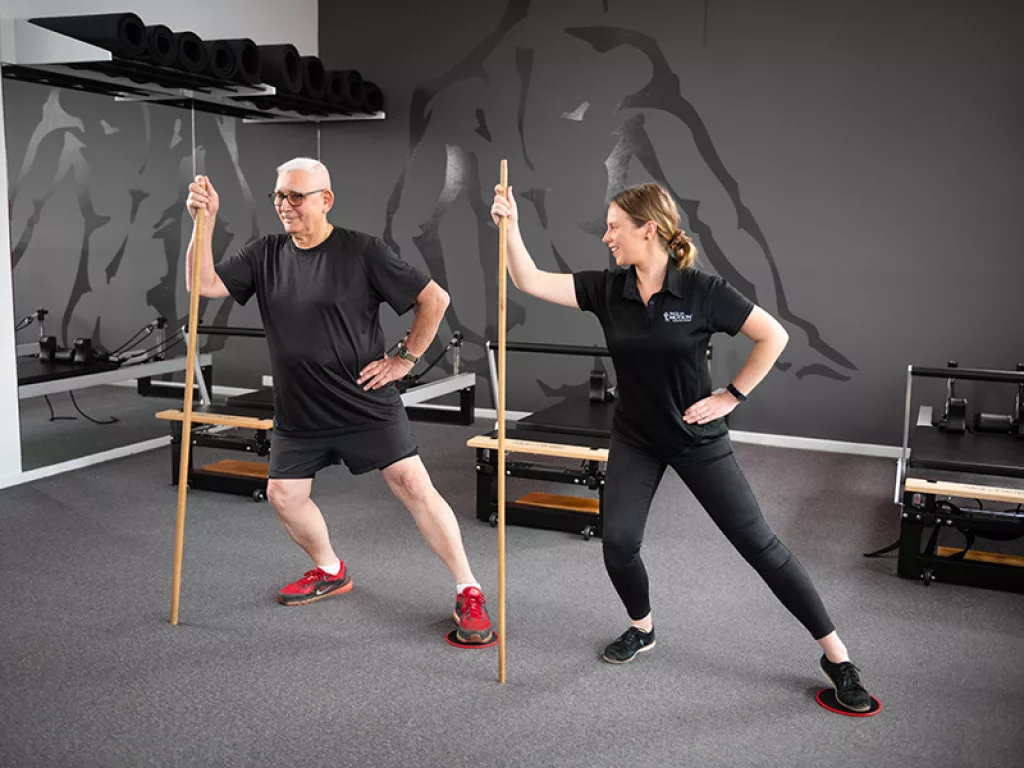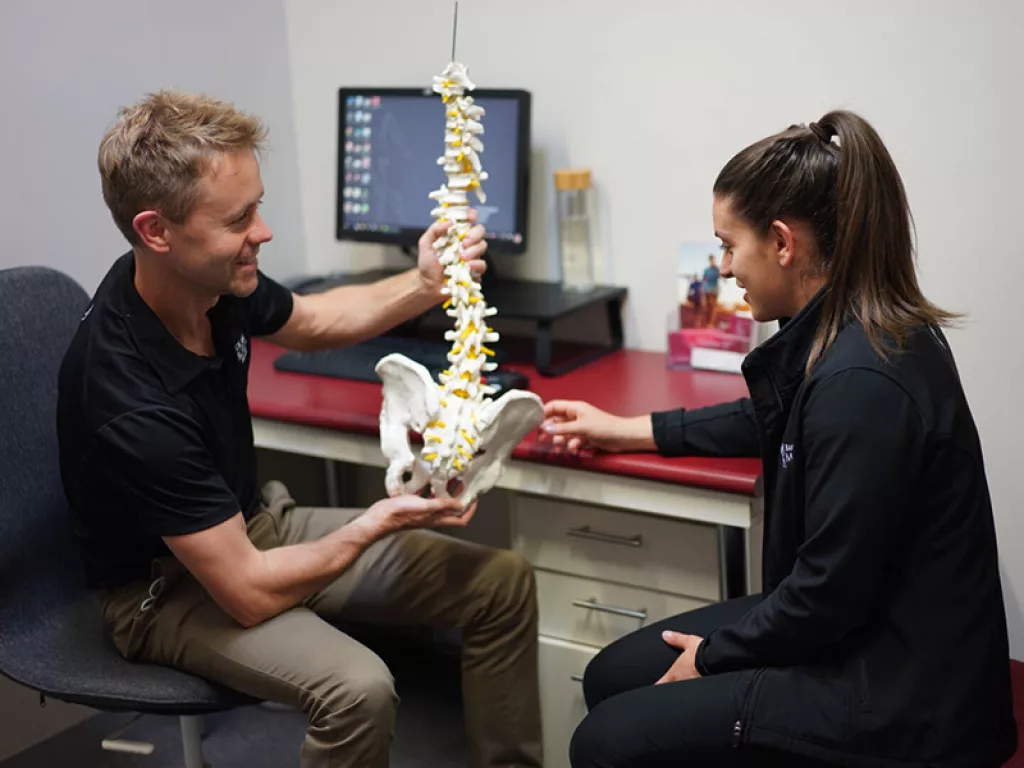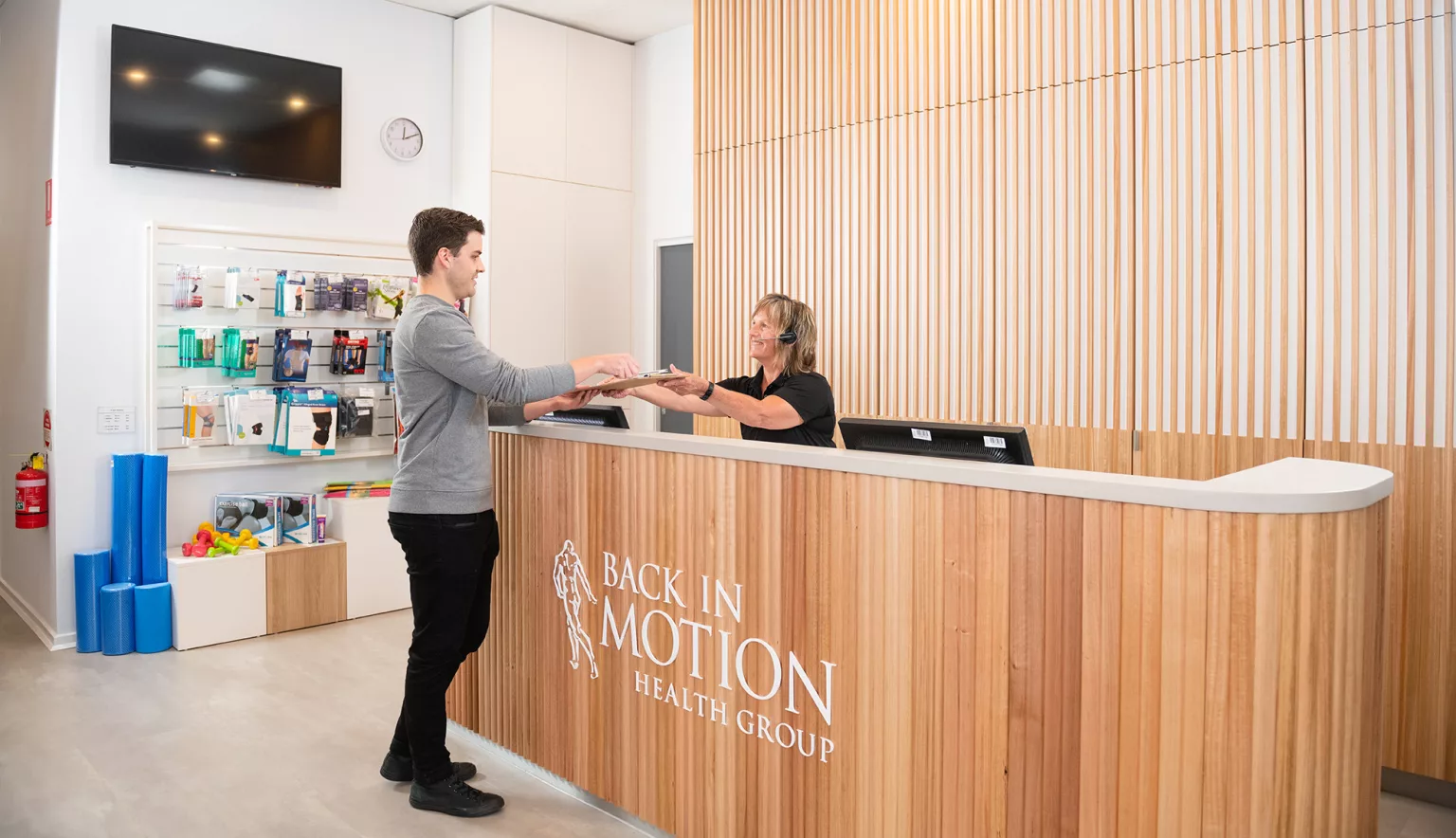For over 20 years, Back in Motion Health Group has catered to the wellness needs of Australians and New Zealanders. Founder and Group Director Jason T. Smith examines a holistic approach to allied health.
HEALTHCARE AUTONOMY IN MOTION
“We’re not practitioners of just pain management – we think that’s a very narrow or minimal view of what we do.
“We don’t want to just treat pain; we want people to live long and live well. We want to get people moving.”
Back in Motion Health Group (BIM) is an enterprise entirely founded on a philanthropic passion for the health and wellbeing of others.
For Founder and Group Director Jason T. Smith, this preoccupation first manifested itself when, as a small child, he experienced a defining moment whilst absorbed in a commercial break during Saturday morning cartoons. He was confronted by the plight of impoverished Ethiopian children in a charity’s advert.
“I remember just thinking at the time, this doesn’t make sense. Where are the doctors and the nurses, and why is there not food to eat?
“Of course, this was just the naïve musings of a white middle class suburban boy who didn’t realise that there was a whole world of disadvantage out there,” he recalls.
Nevertheless, Smith’s path was set. After failing to achieve the grades needed for medical school, he found his path in physiotherapy and began participating in volunteer projects across Asia.
“That job very quickly grew into what has become a business. BIM was created originally to become an economic engine to keep doing philanthropic work.”
Today, after running for over 20 years, BIM’s operations span 140 locations and a workforce of approximately 750 employees across Australia and New Zealand, with two brands united under the ownership of the BIM-parent entity. This is divided into ‘Back in Motion’ across Australia, complimented by the New Zealand sister brand, ‘Motion Health’.
The branches are run on a partnership ethos, whereby all practices are either owned or co-owned within a franchise structure, with practice principals, practice managers, receptionists and of course physiotherapists installed at each site.
Now offering a wide gamut of health-related services, from Pilates classes to soft tissue therapy, fitness and conditioning, the BIM enterprise has evolved significantly from humble beginnings as a sole physiotherapy practice operating out of Smith’s garage.
“We have an extended range of expertise that surpasses just traditional physio to really widen our reach and impact. It’s built around this idea of delivering results for life rather than just a quick fix.”
“We have tried to dismantle all of those hierarchical controls that can slow businesses and distort benefit to the end consumer”
Jason T. Smith, Group Director, BIM

CARE AND CONNECTIVITY
The role of technology within healthcare is only just beginning to discover its true impact, with an exciting future ahead in this arena.
At BIM, the COVID-19 pandemic has been an accelerant for the strides taken in this area, becoming a challenge that is impossible for any health care practitioner to ignore.
“Because we’re in the people business with tactile therapy, you can’t easily substitute hands-on intervention, but the reality is that with COVID-19 we have to learn how to deliver healthcare via remote control,” Smith comments.
Extending its remit into virtual services, BIM launched several new projects, including a tech concierge app that gave clients the ability to access services on demand, book, pay, engage with therapists and manage their exercise programme entirely online.
“This is also all about empowering our patients with control so that they feel in charge of their health,” Smith comments.
“Another project in the area of digital health is about delivering rehabilitation services through private online connections, so that’s actual face to face practitioner engagement through video connection in a way that’s a little more secure and sophisticated than just a Skype call,” he expands.
Finally, and reflective of the holistic vision of health that BIM champion, the company is venturing into the realm of nutrition. This initiative targets BIM clients whose rehabilitation and health outcomes are dependent on dietary elements and concerns the remote delivery of nutritional services.
With the implementation of virtual health services and an agile management of internal operations initiated with the ‘COVID-19 Task Force’ that BIM launched during the pandemic’s nascency, the company was able to weather the storm whilst keeping in relatively good health.
“The good news is that we grew by approximately 25 percent through 2020 and in 2021 – we’ve had some of our best years despite being shut down across the country on various occasions,” Smith tells us.
In such a geographically vast and diverse landscape as Australia, the incorporation of technology within BIM’s service offering has crucially extended reach to rural areas beyond the larger cities, also significantly paving the way for work within Australia’s indigenous communities.
This hearkens back to Smith’s early trajectory into healthcare, partaking in critical volunteer projects in some of the world’s most impoverished areas and his “passion to serve the poorest of the poor.”
“For 10 years we have run the SOS Health Foundation, which is our own charitable organisation deploying hundreds of healthcare volunteers into indigenous Australia and works with remote communities to close the gap on health outcomes,” he explains.
Further from home, BIM has committed to water sanitation in India, rehabilitation centres for trafficked children in Thailand and delivering medical equipment to communities in Burma to name just a few initiatives.
“There’s no shortage of need, so every year we take portions of our profit and commit it to volunteer effort.”
“Our key ethos is entirely built around the idea of movement for life. We are movement advocates”
Jason Smith, Group Director, BIM

CULTURE AND STRUCTURE COMBINED
The company philosophy of achieving lifelong results on behalf of its clients is firmly entrenched into operations, with the BIM culture intrinsically linked to the people-centric structure of the business itself.
Smith is keen to highlight staff as the company’s most valuable asset, with their welfare becoming a true priority over the course of the pandemic.
“Working in something like healthcare where it is so interpersonal and there is an intimacy with clients, there is a sensitivity around what we do. There is no price that you can put on the quality of team,” he states.
Within BIM, team members are made to feel empowered, while the client is held at the very nexus. Smith endorses an ethos known as ‘One Team’ and has even written a book on the subject, that centres on a mode of staff management addressing topics such as free speech, distributed authority and the principle of peer accountability.
“We don’t work from a top-down linear hierarchical structure, but rather a spherical model with the patient at the very middle. Executives and higher title management are on the periphery and the people closest to the client are those with the higher autonomy to drive health outcomes, since they are engaging with the patient and they are the most agile and responsive,” Smith explains.
“That describes our culture and structure, and what it does is give people creativity, innovation and license to try new things. This is the glue that holds us all together.”
Ultimately, this channels the vision of wellness that BIM endorse into the staff themselves.
“Mental health is now a massive point of contention that you have to keep looking after, so I think giving people control over decisions that affect their life and work is optimum for mental health.
“They feel in control at a time when there are a lot of things that are out of their control,” he comments.
This empowering model of partnership that centres on a core alignment of values echoes through the BIM supplier relationship framework, whereby all suppliers are vetted and filtered through an ethical procurement policy.
This approach channels a holistic vision of growth through which everyone is a winner. For Smith, it is a true privilege to watch these partners grow in alignment with BIM, some of whom have been supplying the company for over twenty years, back when the business was still operating out of Smith’s garage.
“We have very strong partners in tech, physio supplies, and professional services that all become part of our fabric.
“20 years later, we have grown and so have they to keep up with our demand. In some cases, we have even bought a share because we believe so much in the partnership. It’s been a really wonderful part of our story that I would never have anticipated.”
With an ever-expanding portfolio of services, BIM’s extensive capabilities are sure to keep the company in long-term health.
“We’re big on growth and scale. We have just pressed the go button on the roll out of a whole range of new services in the past few months and we’re about to announce a partnership with a large ASX-listed allied health aggregator with services in hand, occupational and speech therapy – putting us more squarely into the sector of Allied Healthcare and Integrated healthcare rather than just physiotherapy.
“We see this as the springboard to triple our growth over the next few years.”





































